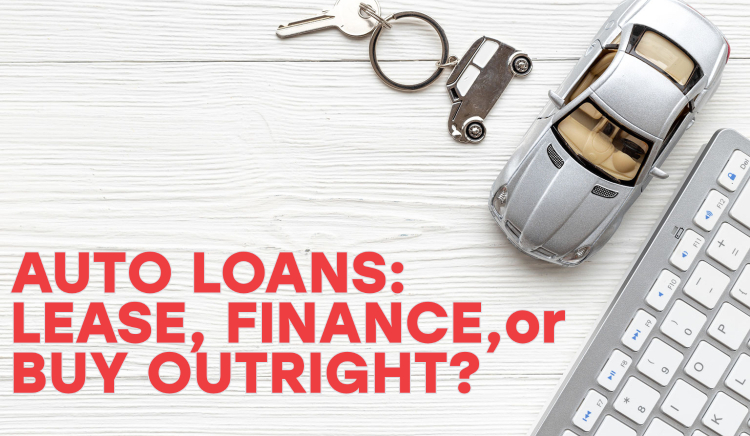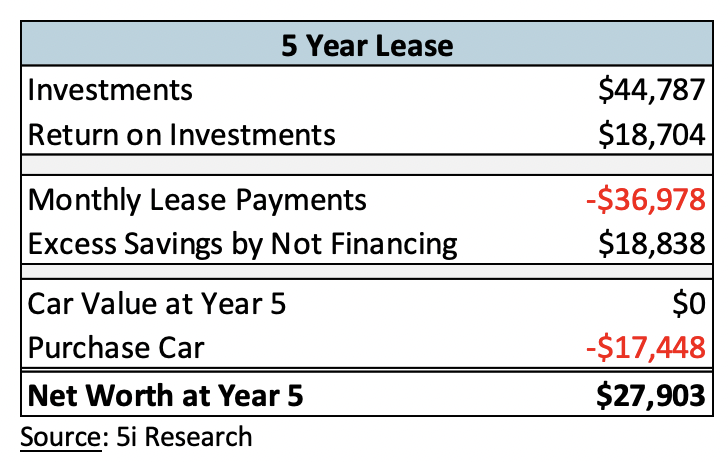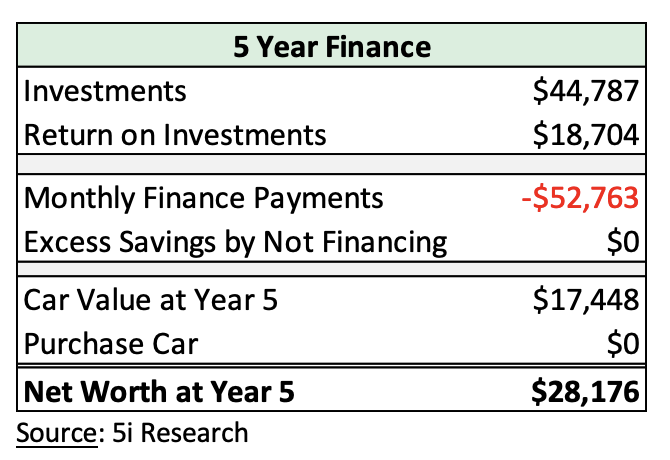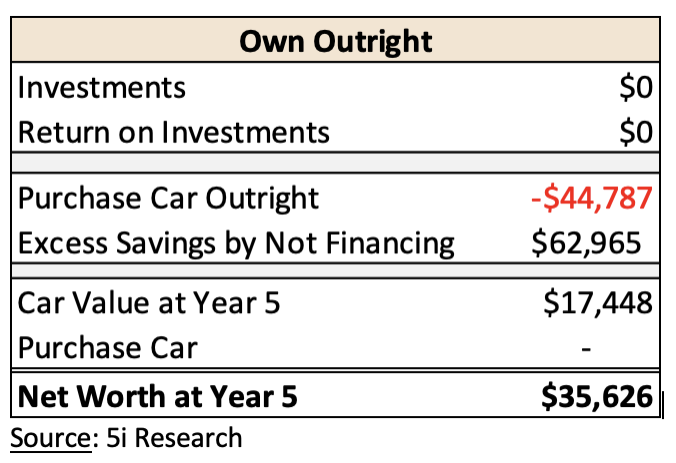Auto Loans: Lease, Finance, or Buy Outright?

Lease, Finance, or Cash Purchase: Which is the Right Option?
When the time comes to purchase a new vehicle, there are so many questions that individuals face: should I buy new or used, from a dealership or online, lease, finance, or buy with cash? While the numerous questions can be overwhelming, in this article, we aim to tackle the age-old question of whether you should lease, finance, or outright purchase a vehicle.
Let me start by saying that after running the numbers, there is really no wrong answer. It is purely a personal decision, and a lot depends on the individual finances and what works best for their situation. Purchasing with cash upfront is a great method if an individual has the cash and does not want to deal with ongoing monthly payments. On the other hand, financing is a good choice for those looking to still own the vehicle but would prefer smaller ongoing payments or to keep their cash invested. Leasing is an attractive option for those looking to avoid ongoing maintenance expenses and drive a new vehicle every five years or so. Here, we aim to reveal some of the pros and cons of each method, but also the total cost and opportunity cost for each option.
Option 1: Leasing
When an individual leases a vehicle, it is essentially a rental agreement. A lease allows someone to drive a new car for the length of the lease (ranging from 2-5 years) and return the vehicle once the lease is up. There are a few restrictions, however, when leasing a vehicle, such as annual kilometre restrictions, early termination fees, fees for excessive wear and tear, and other administrative fees. The key benefits to leasing are that it is, on average, 30% cheaper than financing a car, it allows an individual to drive a new car every few years as they jump from lease to lease, and the vehicle is usually covered under the manufacturer's warranty. Since a lease is a rental agreement, the individual does not own the car at the end of the lease, and the monthly lease payments do not build up equity. Leasing is a great option for those looking to save on monthly payments, reduce maintenance expenses, and like to drive new cars frequently.
Option 2: Financing
Financing a vehicle is a form of loan backed by the vehicle itself. When an individual finances a car, they make monthly payments that contribute toward both the principal (paying down the cost of the car) and interest (expense for getting a loan on the car). The monthly payments when financing a car are higher than leasing, but at the end of the financing agreement, the individual owns the car and can continue to drive it. Since, in a financing arrangement, the individual owns the car, they tend to pay more in maintenance and other expenses than someone who leases, but they are not subject to annual kilometre restrictions, early termination fees, or fees for excessive wear and tear. Financing is a great option for those that can afford a higher monthly payment and are looking to own the car after the payments are done.
Option 3: Buy Outright
Purchasing a vehicle outright is self-explanatory—an individual uses cash to pay the full cost of the vehicle upfront and avoids monthly payments, interest expenses, and a few other administrative fees. This option allows the individual to own the car, although similar to financing, more maintenance and other expenses will be involved than on a lease. This is a great option for an individual that has the available cash to pay for a car, is looking to own the vehicle, and does not want to pay interest expenses.
Cost-Benefit Analysis of All Three Options
Now that we know the general terms and conditions for leasing, financing, and buying a vehicle outright, we have conducted a cost-benefit analysis that compares all three options. For this analysis, we have used a new car value and ending lease value for a Toyota RAV4 and financing rates provided by Toyota. Please note these values may not be completely reflective of the costs when purchasing through a dealership, and there are usually additional fees that can vary by dealership.
Let’s look first at leasing a vehicle. The new vehicle cost is $39,635 and if the individual chooses to buy out the car at the end of the lease, the ending lease value is $17,448. The lease is a 5-year term, due on delivery is $657, there is a 13% tax on the vehicle, and the interest rate is 7.19%. The monthly payments in this scenario are ~$616.
If financing the same vehicle, the new vehicle cost is $39,635, it is a 5-year term, 13% tax on the car, the due on delivery is $61, and the interest rate is 6.59%. The monthly payments in this scenario are ~$879.
When purchasing the vehicle outright, the total cost is $44,787—broken down by $39,635 for the car and $5,152 for tax.
For our cost-benefit analysis, let's assume that an individual has the financial capability to pay the monthly financing costs and the cash to purchase the car outright and that the annual returns on an investment portfolio are 7%.
In the first option, a 5-year lease, the individual gets to keep their $44,787 invested, earns $18,704 in returns on that investment over five years, pays a total of $36,978 in lease payments, but saves and reinvests the extra amount they would have otherwise spent on financing the vehicle, but is left without a car at the end of the five years and purchases the vehicle for $17,448. This individual's net worth at year five is ~$27,903.

In the second option, a five-year loan, the individual keeps their $44,787 invested, earns $18,704 in returns on that investment, pays a total of $52,763 in financing payments, but owns the vehicle worth $17,448 at the end of the financing agreement. This individual's net worth at year five is ~$28,176.

In the third and final option, purchasing the vehicle outright, the individual spends their investments of $44,787 on purchasing the car. However, by not making monthly payments for the next five years, they can save and reinvest the $879 that would have gone to financing a vehicle and end up with $62,965 at year five and own the vehicle worth $17,448. This individual's net worth at year five is ~$35,626.

What we have demonstrated here is that the actual cost and opportunity costs between financing and leasing a vehicle are very similar to each other, whereas, in the current high-interest rate environment, there is a slight benefit to purchasing a car outright. In a lower interest rate environment, using cash to purchase a vehicle may have less of a benefit to financing or leasing, as rates will be lower, and the opportunity cost of not investing the cash will be higher.
The result is that no matter which option an individual chooses, there really is no “wrong” answer. From a purely financial standpoint, in the current high-interest rate environment, purchasing outright may leave an individual with the best value, but the savings from leasing as opposed to financing help to more than offset the “rental” aspect of a lease.
By Chris White, Chartered Financial Analyst
5i Research Inc


You assume people can save the same amount each month as the monthly finance payments.
There is no inclusion of a sinking fund for non-lease vehicle replacement.
Maintenance and potential repairs are not adequately allowed for.
Comments
Login to post a comment.